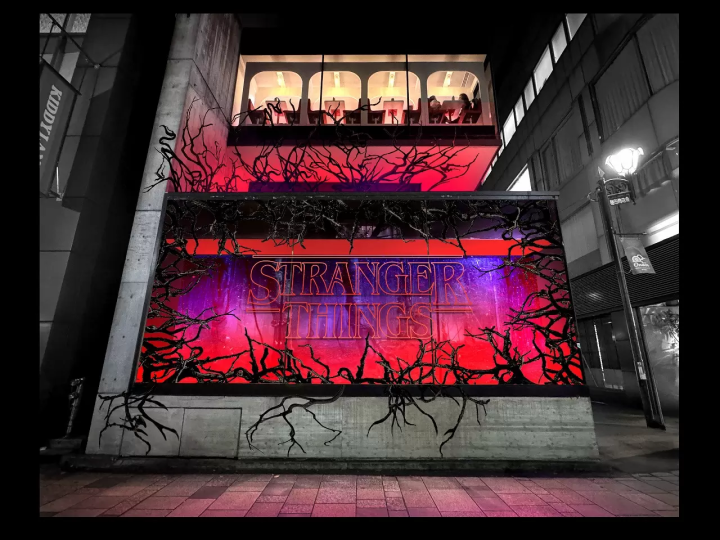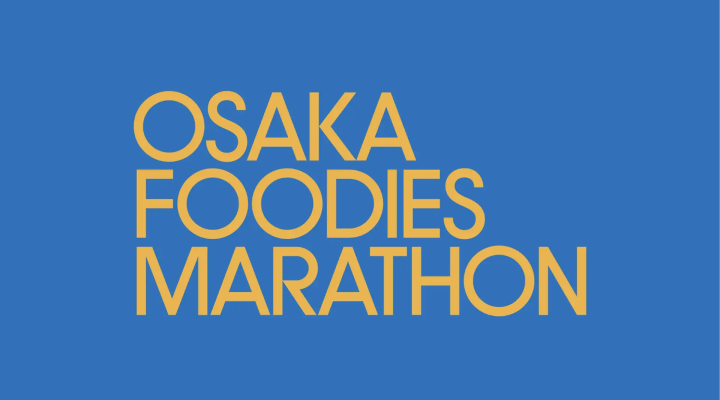Experience Healing and Nature: Discover Kakeyu Onsen and Maruko Onsen Villages in Nagano

Just 40 minutes by car from Ueda Station, Nagano, Kakeyu Onsen offers silky waters for beautiful skin. Explore charming inns and nature-filled Maruko Onsen Villages!
-
Table of Contents
- ``Kakeyu Onsen'' is known for its soft spring quality that won't make you tired even after a long bath.
- [Accommodation] Wine barrel baths and open-air baths are popular! ``Kuroiwa Ryokan'' has delicious food
- [Day trip hot spring] “Town Takanashi Public Bath” has a local atmosphere!
- [One-day hot spring] “Monju-no-Yu” where you can be healed by the sound of the river and nature
- Let's take a detour to the nearby Oshio Onsen and Reisenji Onsen!
- Access information to Kakeyu Onsen
``Kakeyu Onsen'' is known for its soft spring quality that won't make you tired even after a long bath.
Nagano Prefecture has many hot spring areas within the prefecture, including Bessho Onsen and Nozawa Onsen. “Kakeyu”, which we will introduce this time, is a special hot spring area that is only known to those in the know. There are many attractive points, but the most noteworthy is the soft spring quality. When you soak in the water, the water is so soft that you feel as if your body has become lighter.
The temperature of the hot spring is just right, neither too hot nor too lukewarm. Another good point is that you won't feel tired after taking a long bath. The type of hot spring is a colorless and transparent simple hot spring (weakly alkaline, hypotonic, high temperature spring). It has no odor and is said to be effective for autonomic nervous system instability, insomnia, depression, neuralgia, joint pain, rheumatism, and mild hypertension.
``Kakeyu'' is home to a legend told by a deer.
About 30 inns and hotels line the river, and Kakeyu Onsen has long been popular as a hot spring resort. Only hot springs that meet the criteria, such as the effectiveness of the spring quality and the beautiful scenery in the vicinity, are designated as hot springs. It has become a national recreational hot spring resort . The name ``Kakeyu'' is said to have come from hunters who saw injured deer healing their wounds in the hot springs and becoming healthy again. According to one theory, the deer is a transformed form of the Bodhisattva Manjushri, and it is said that it led them to the hot springs, and within the hot springs there is Kakeyu, which is dedicated to the Bodhisattva Manjushri.
This time, we will introduce special hot spring inns and day trip hot springs at Kakeyu. The baths at each hotel and inn are also attractive, so be sure to check them out as well when traveling!
[Accommodation] Wine barrel baths and open-air baths are popular! ``Kuroiwa Ryokan'' has delicious food
``Kuroiwa Ryokan'' is so popular that even locals say ``If you're looking for a meal, go to Kuroiwa .'' It is located in front of the bus stop "Rokukyobashi" at the entrance of Kakeyu.
The hot springs have an indoor bath and an open-air bath, and the outdoor bath includes a large stone bath and a barrel bath. There are two types of barrel baths, cypress barrels and wine barrels, and it's interesting that you can compare them. Listening to the sound of water and birds while soaking in the soft water will make your mind and body feel lighter.

The dishes prepared by the owner, who is a former chef, are exquisite! You can enjoy the delicacies of Nagano Prefecture, such as salt-grilled rockfish (tail and head), a plate using large asparagus from Nagano Prefecture, sirloin steak of Shinshu Minemura beef, and shime Shinshu soba noodles. I also appreciate the thoughtfulness of the staff, such as explaining the dishes at just the right time and asking, ``Would you like some dessert?''
[Day trip hot spring] “Town Takanashi Public Bath” has a local atmosphere!
The Machi Takanashi Public Bath, located about a 3-minute walk from Kuroiwa Ryokan, is an unmanned public bath that is also visited by locals. There is a changing room at the back of the entrance, where you change your clothes and head to the bath. (The 200 yen bathing fee is unattended and placed in the collection box in the changing room.)

A bath with soft light shining through the window. This is also very gentle to the touch, making it perfect for a morning bath. The lion spout is so cute.
Local people asked me, ``Where did you come from?'' and I heard stories such as ``When I was a child, I had a skin disease and I soaked in the hot water here and was cured.'' I felt a sense of warmth and communication that could only come from being in a communal bath. Please note that there are no showers in this communal bath (only faucets), so it may be a little difficult to wash your hair. Also, there are no towels or shampoo, so if you want to wash your body, we recommend bringing your own.

[One-day hot spring] “Monju-no-Yu” where you can be healed by the sound of the river and nature
Kakeyu Bridge, which is popular as a highlight spot of Rokukyoyu Onsen, is a rare covered bridge that spans the valley leading from the hot spring town to Monjudo, and is said to connect this world with the world of the gods. It has been said. Monju-no-Yu is located at the foot of the mysteriously beautiful Godai Bridge.
The inside of the facility is spacious, with vending machines and chairs where you can sit freely, and it has a relaxed atmosphere typical of a spa, where customers can ask each other questions like "Are you free?" Purchase a ticket from the ticket vending machine at the entrance (300 yen for adults, 200 yen for children) and head to the hot springs.

There are two types of hot springs: indoor and outdoor, and the indoor baths are fully equipped with showers and soap. The spacious open air is just a pleasant feeling. The soft and soothing hot water is accompanied by the sound of the river and the rustling of the trees that can be seen through the gap between the blindfolds. Even after taking a long bath, I didn't feel tired at all.
Monju-no-Yu is a hot spring bath where you can bathe in a mixture of hot spring water from five different sources. This may be the reason for its gentle texture.

Let's take a detour to the nearby Oshio Onsen and Reisenji Onsen!
The Kakeyu Onsen that we introduced this time is located in an area called "Maruko Onsenkyo" in Ueda City, Nagano Prefecture. In addition to Kakeyu Onsen, there are two other hot springs here called ``Oshio Onsen'' and ``Reisenji Onsen.'' Both are attractive hot spring resorts, so if you have time and schedule, it might be interesting to try out the hot springs and compare them.
Oshio Onsen is said to be where Sengoku warlord Takeda Shingen healed his wounds with his subordinates.
Discovered during the Warring States period, Oshio Onsen is known as ``Shingen's hidden hot spring'' because of the legend that soldiers of the Takeda army healed their wounds during the Battle of Kawanakajima. It contains a lot of radium and is said to be effective against injuries and diseases.
The photo is of the Oshio Onsen public bath. You can enjoy a relaxing bath for just 200 yen. Because the temperature of the hot spring source is low, it is recommended to take a bath after 4:00 pm in winter when the temperature is suitable.

Popular with locals too! ``Reisenji Onsen'' is famous as a ``hot spring for beautiful skin''
This hot spring resort is so popular that some locals visit it every day. There are four hot spring inns in this hot spring town with a relaxing retro townscape, all of which allow you to enjoy hot springs straight from the source. It is very gentle on the skin and can be used even by people with sensitive skin and babies.
With the delicious air, beautiful starry sky, friendly people at the hot springs, and delicious food, it's the perfect place to relax and have many repeat visitors. There are many sights to see, such as Reisen Zenji Temple at the entrance to the hot spring town, a large zelkova tree that is over 700 years old, and Chigogafuchi.

Access information to Kakeyu Onsen
Kakeyu Onsen is easily accessible from Ueda City and Matsumoto City in Nagano Prefecture, and there are many attractive spots nearby. It's convenient to take the convenient Shinkansen and stay for a few nights, and if you're staying for a long time, it's convenient to have a car that can take you to nearby spots. You can also rent a car in Matsumoto or Ueda.
If you go by Shinkansen from Tokyo
From Tokyo Station, take the Nagano Shinkansen and get off at Ueda Station. Approximately 1 hour by bus ( Chikuma Bus bound for Kakeyu Onsen) or 40 minutes by taxi. If you are heading from Shinjuku, take the Limited Express Azusa and get off at Matsumoto Station. It takes about 50 minutes by bus ( Shoden Albico Bus bound for Kakeyu) or 30 minutes by taxi. If you use the bus, be sure to check the bus company's website for the timetable as the number of buses is limited!
If coming from Tokyo by car
If you are heading from Nerima IC, take the Kanetsu Expressway and Joshinetsu Expressway to Tobu-Yunomaru IC. Take Route 18, Route 152 (toward Maruko), or Route 254 (toward Matsumoto) to Kakeyu Onsen (40 minutes). From Takaido IC, take the Chuo Expressway/Nagano Expressway to Matsumoto IC or Azumino IC. Arrive at Kakeyu Onsen via Route 254/Sansaiyama Tunnel (40 minutes). In winter, be careful of snow while driving.
Choose the transportation method that suits your length of stay and purpose and enjoy a safe and comfortable journey!
National hot spring resorts are designated by the Minister of the Environment under the Hot Springs Act as healthy hot spring resorts where the benefits of hot spring use are expected to be sufficient. 79 hot spring resorts have been designated nationwide (as of October 2024). National hot spring resorts are selected based on the following criteria. 1. Conditions regarding the quality and volume of hot spring water (1) The source of the hot spring water used must be a therapeutic spring. (2) The hot spring water used must have an abundant volume of water. The standard volume of water flow must be 0.5 liters per minute or more per hot spring user. 2. Conditions regarding the environment of the hot spring resort (1) The hot spring is suitable as a resort from the perspective of the natural environment, townscape, history, climate, culture, etc. (2) A plan for the placement of doctors who can provide guidance on proper hot spring use and health management from a medical perspective, or a plan for the placement or training policy of personnel who can provide guidance on bathing methods, etc. in cooperation with the doctors, must be established. (3) Appropriate efforts will be made to protect hot spring resources, manage the hygiene of hot springs, promote public use of hot springs, and take into consideration the elderly and disabled, etc. (4) Enhanced efforts to prevent disasters.
The contents on this page may partially contain automatic translation.




























![[Coupon Available] Recommended Fall/Winter Wear from Scandinavian Brand "Helly Hansen"](https://resources.matcha-jp.com/resize/720x2000/2025/12/15-252920.webp)
![Deep dive into Japanese brands! A tour of famous leather shoe stores with GENSEI & Nin [Otsuka Shoes Edition]](https://resources.matcha-jp.com/resize/720x2000/2025/12/15-252972.webp)
